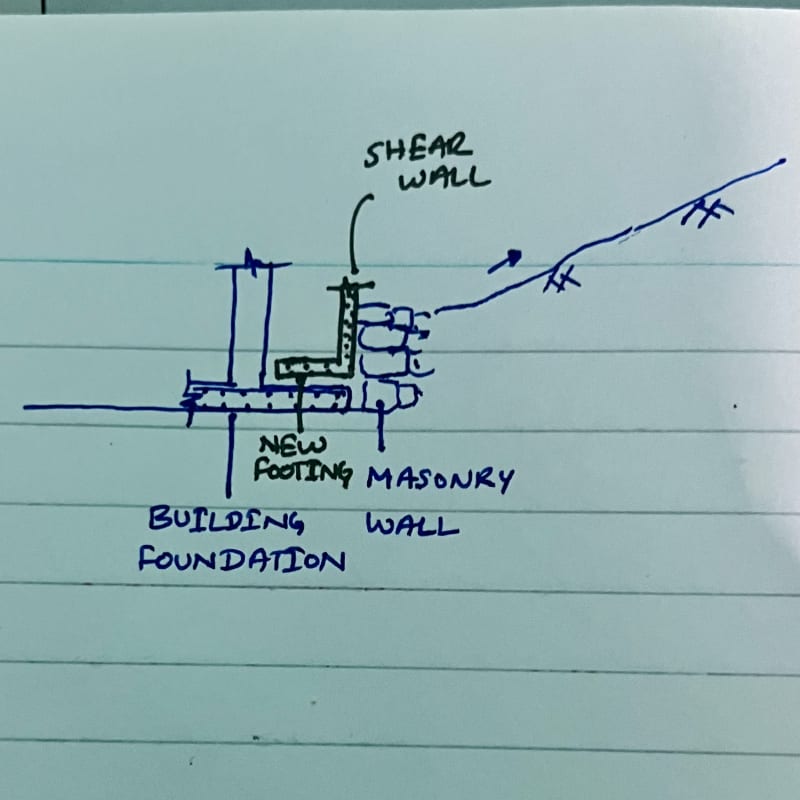warlapen
Civil/Environmental
- May 16, 2024
- 5
Is it possible to build a new foundation over existing foundation ?
While working on a building site located next to a sloped land, we first decided that shear walls or retaining walls are not necessary, as there already were stone masonry structure to support the soil. We completed the foundation of the project and completed further works, and completed plinth tie beam casting.
But now, the client is asking us to build a shear wall.
The problem is, our existing foundation slab extends until the boundary line of the plot, and in order to build a shear wall, we have no choice but to provide its foundation on top of the building foundation.
Is this possible, and if so, how can it be done safely?
I have attached a rough sketch of the situation.

Any feedback is much appreciated.
While working on a building site located next to a sloped land, we first decided that shear walls or retaining walls are not necessary, as there already were stone masonry structure to support the soil. We completed the foundation of the project and completed further works, and completed plinth tie beam casting.
But now, the client is asking us to build a shear wall.
The problem is, our existing foundation slab extends until the boundary line of the plot, and in order to build a shear wall, we have no choice but to provide its foundation on top of the building foundation.
Is this possible, and if so, how can it be done safely?
I have attached a rough sketch of the situation.

Any feedback is much appreciated.
